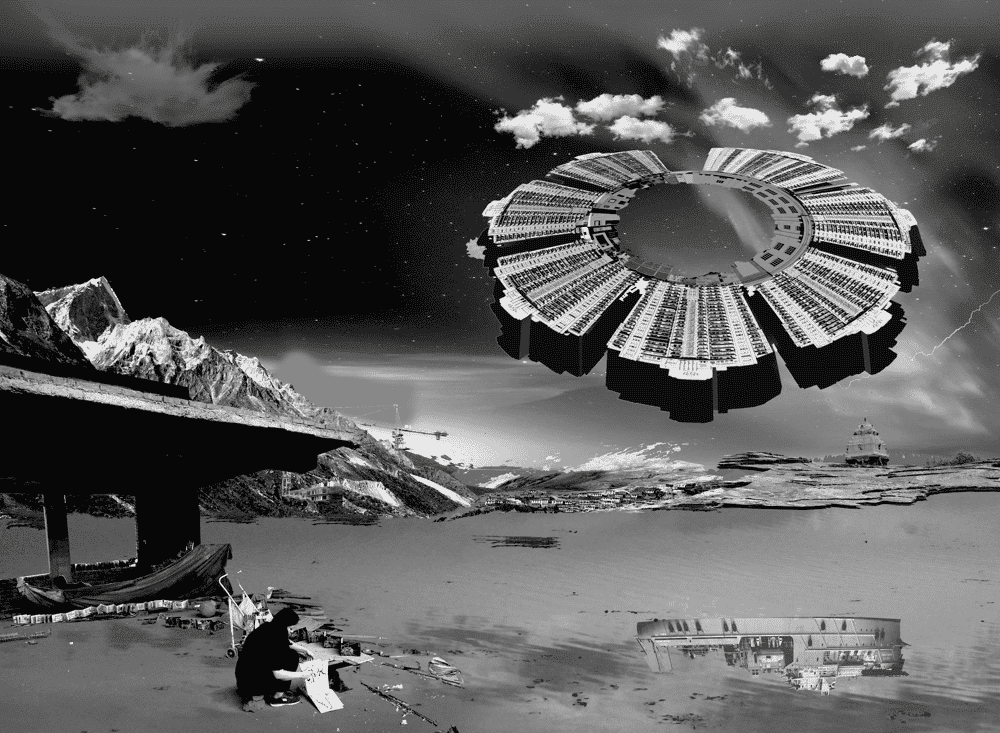#InConversation with Aditi Aggarwal
By Davangi Pathak | Jul 9 2024 · 20 mins
Aditi explores singular ideas through various lenses and dimensions, creating a dynamic interplay in her art. Through this interaction, we will explore how her works archive her immediate surroundings and how she revisits them to create images imbued with narratives.
Davangi: Could you describe your experience at Kalabhavan and your experimentation with
photolithography?
Aditi: In 2019, I was selected for the Indo-European Residency Project Kolkata, organized by the British Council, Kolkata, the Goethe-Institut/Max Mueller Bhavan Kolkata, and the Alliance Française du Bengale, in collaboration with the Kolkata-based gallery CIMA and Kala Bhavana, Visva Bharati University, Santiniketan, West Bengal. During my stay in Santiniketan as part of the residency, I had the opportunity to choose a department to work in. I selected the Printmaking Department to explore the idea of multiplicity. My experience at Kalabhavan was profoundly enriching. Working in the Printmaking Department allowed me to delve into the mediums of serigraphy and PS Plate lithography. These techniques complemented my aesthetics and vision, as they facilitated the exploration of themes central to my work. The dystopian nature of my images found a harmonious resonance with the printmaking processes. The monotone approach, in particular, blurred the boundaries between real and dreamlike images, creating a unique visual narrative.Experimenting with photolithography at Kalabhavan enabled me to push the limits of my creative practice. The medium's inherent qualities allowed me to manipulate and reimagine my work, adding layers of complexity and depth. This experience not only expanded my technical skills but also enriched my conceptual approach, reinforcing my exploration of multiplicity and the interplay between reality and dreams.
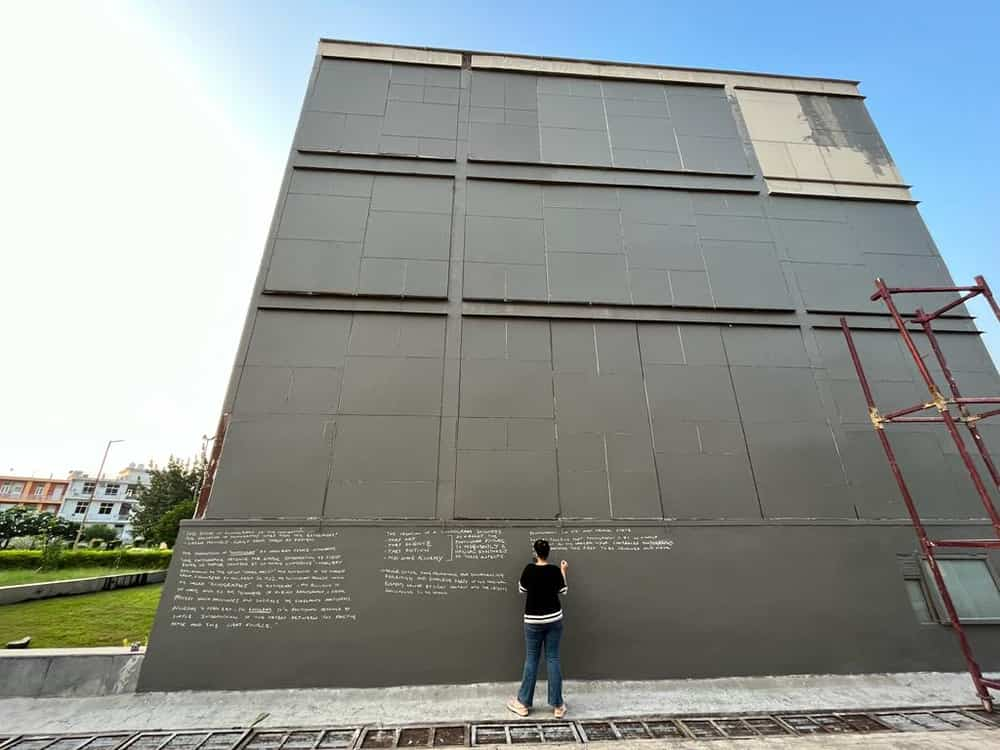

Aditi writing quotes on Celluloid photography and image making on the walls of A49 - DO BE Studio at Kaladham, Greater Noida.
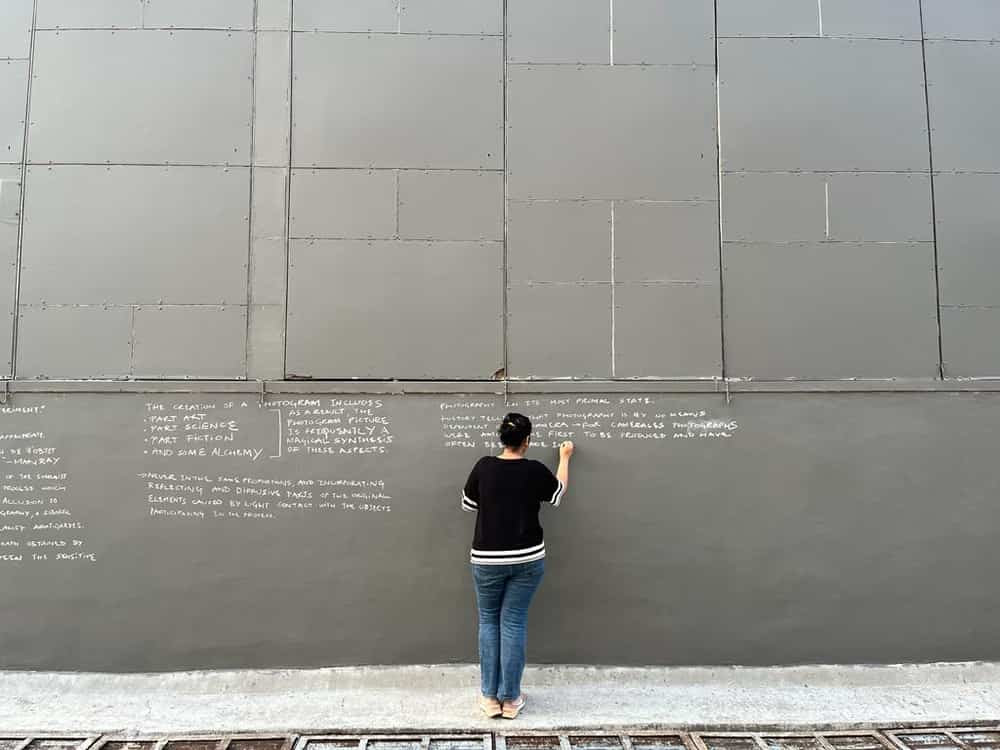

Davangi: In our earlier conversation, you mentioned that your practice intersects printing, painting, and photography. Could you tell us more about this?
Aditi: I see my practice as a confluence of printing, painting, photography, and collage-making, creating a unique space where these mediums interact and enrich each other. Currently, I am working with handmade cameras and customizable cells to capture and interpret the urban experience. This process involves free association and abstraction of time and space, resulting in images that convey both the anxiety and dysfunction of urban life. Through painting, I can add color, form, and texture in a way that directly responds to the printed layers beneath. This manual intervention allows for a dynamic interplay between the controlled, mechanical aspects of printing and the fluid, spontaneous nature of painting. I often use painting to highlight, obscure, or transform elements of the printed base, creating a dialogue between the mediums. Photography serves as the foundation of my practice, helping me capture and interpret reality through my lens. It provides a source of imagery that I can incorporate into my photomontages, prints, and paintings. Photographic elements can be directly transferred into prints, manipulated (constructed or deconstructed) in digital processes, or used as references for painted components. Using handmade cameras, I capture raw, unfiltered moments of my surroundings, objects, and memories. These photographs are then de-structured and layered, creating a dialogue between the original image and its painted counterpart. The act of painting over these photographs transforms them, inviting viewers to engage with the work on multiple levels. Printing, in various forms such as PS Plate Lithography, serigraphy, and alternative photography printing methods, plays a crucial role in my practice, allowing me to experiment with different textures and layers. I often print my photographs and then manipulate these prints through painting or in an analog collage-making process, adding new dimensions and depth to the images. This fusion of mediums enables me to explore the boundaries between the real and the abstract, pushing the visual narrative beyond the conventional. The printmaking process also introduces an element of chance and unpredictability, which I find creatively stimulating. By integrating printing, painting, and photography, my aim is to challenge the traditional notions and approaches of each medium and create a dynamic interplay that reflects the complexity and intensity of the urban experience. This interdisciplinary approach expands my artistic vocabulary and opens up new possibilities for visual storytelling.
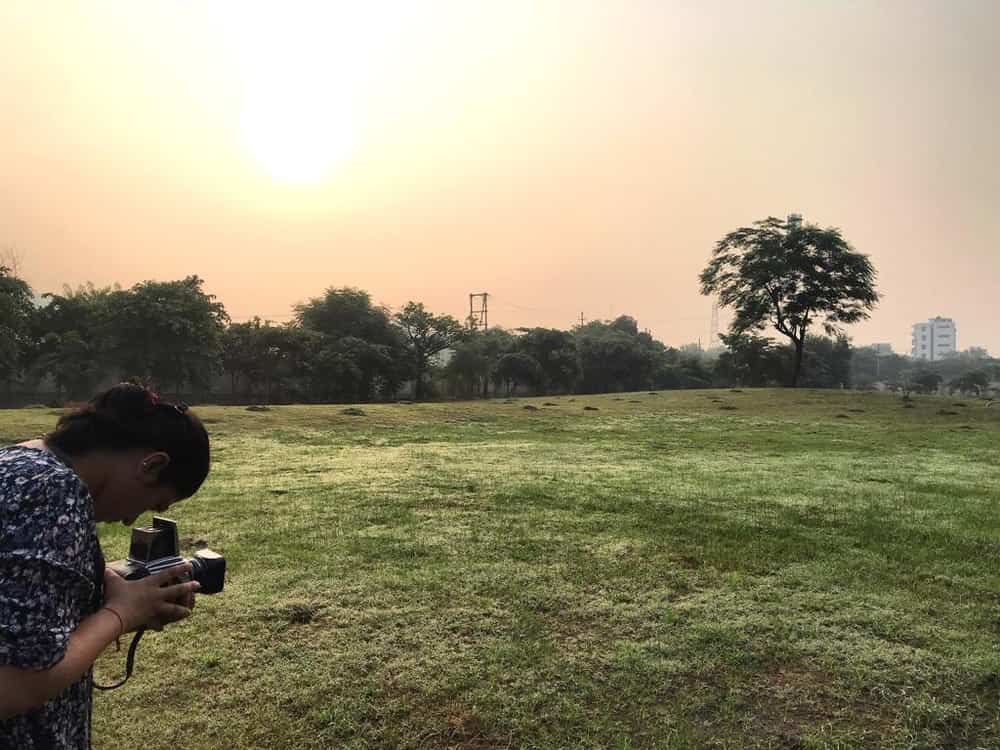

Behind the scenes
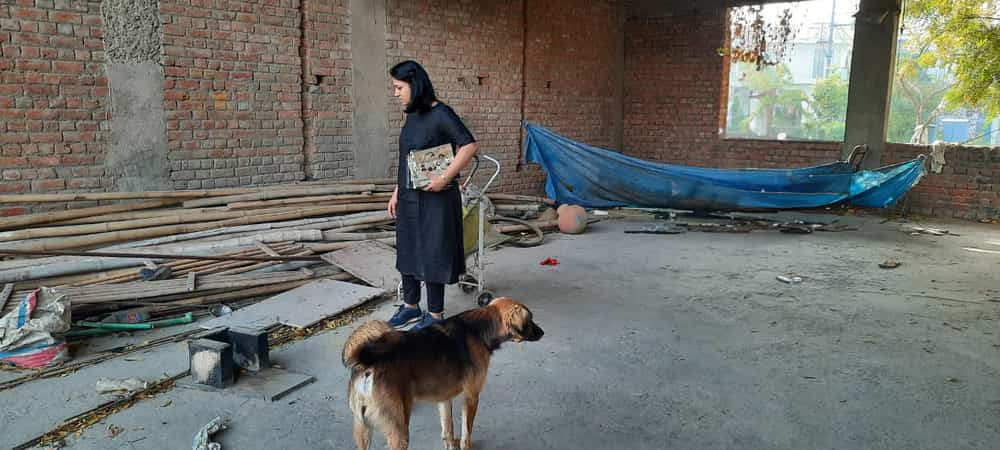

Aditi inspecting the site
Davangi: You enjoy using various technologies to create compositions. What parameters do you consider when selecting a technological tool for your work?
Aditi: I want to ensure that the creative process is enhanced and aligns with my aesthetics and vision. The medium or tool must integrate with my existing workflow, allowing for fluid transitions between various forms such as drawing, painting, and digital collage. This ensures that my creative process remains cohesive and uninterrupted, enabling me to blend traditional and digital techniques effectively. The medium's potential for engagement and exploration is essential. While working, I need the medium to offer new ways to interact with and manipulate my work, opening up possibilities for creative experimentation. It should enhance the depth and complexity of my compositions, providing me with methods to express my ideas. The medium or tool's ability to enrich the creative experience is crucial. It should inspire and challenge me, pushing the boundaries of my practice and encouraging innovative thinking. Whether through its features, intuitive design, or the capacity to create immersive experiences, the medium or technology should amplify my artistic expression and facilitate deeper engagement with my work.
Davangi: Could you please tell us more about your PhD? What was your research thesis?
Aditi: My research delved into the evolution and contemporary manifestations of self-portraiture, focusing on artists in Delhi NCR, India, and their exploration of identity. Tracing its historical roots from ancient civilizations to the Renaissance and beyond, the study examined the progression of self-portraiture as a genre, highlighting its significance in both Western and Indian art traditions. In contemporary Delhi NCR, artists confront the challenge of depicting themselves amidst a rapidly evolving technological and societal landscape. Through mediums ranging from painting to multimedia installations, they navigate themes of self-expression, societal influence, and the impact of technology on identity formation. The methodology involved a survey of existing literature, historical data, and oral interviews with artists, academicians, and curators. My thesis encompassed findings dedicated to historical accounts, Indian contributions, societal influences, and psychological dimensions, among others. The focus was to seek the current understanding of autobiographical visual expression, shedding light on the nuanced ways artists grapple with notions of selfhood, technology, and societal context in their creative endeavors and contribute to the field.
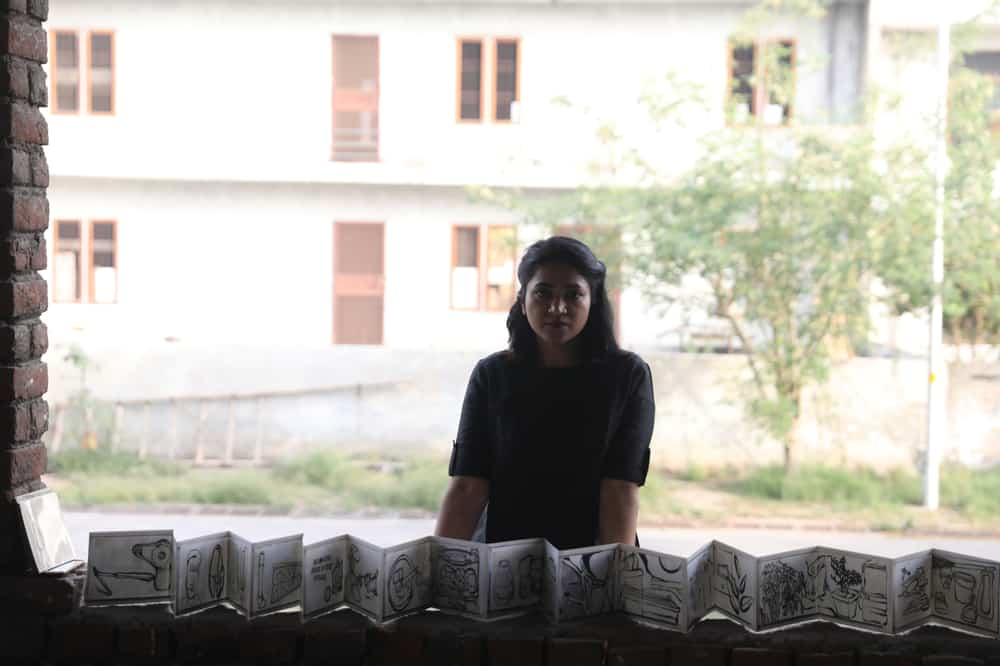

Aditi displaying her work at an unfinished / under construction/ unoccupied studio at the Kaladham - Resident Artist Studio Complex at Knowledge Park 2, Greater Noida.
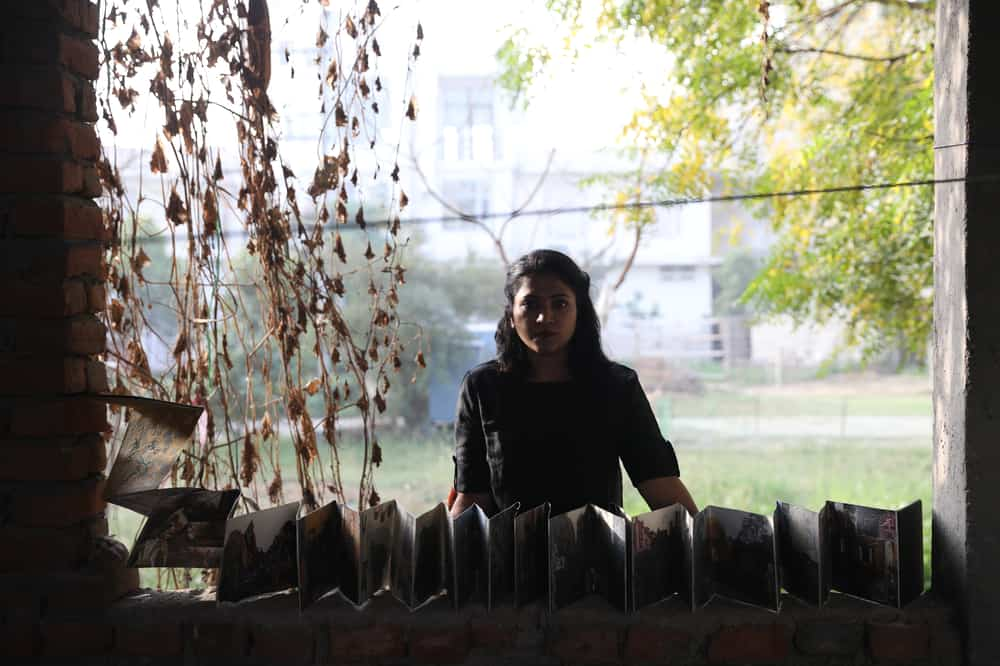

These unfinished structures were inhabited by migrant workers, who worked towards their completion on daily wages. With the onset of the Pandemic, they moved back to their respective hometowns. To her, these vacant studios (with their leftover belongings) became sites to generate thoughts and fiction.
Davangi: Are there any artists, their methodologies, or aspects of their lives that inspire you?
Aditi: My artistic inspiration comes from diverse sources, reflecting a multifaceted engagement with the world around me. I am fascinated by the transformative power of perception—how familiar subjects, when viewed through a fresh lens, can reveal new dimensions of understanding. This philosophy underpins my creative process, infusing it with ever-evolving dynamism. I draw inspiration from intricate patterns in neglected cracks, the weathered textures of peeling walls, and other overlooked details of urban landscapes. These elements serve as visual metaphors, encapsulating the passage of time and the resilience of life amidst decay. Personal memories and the history of a place also play a crucial role in my work, imbuing it with layers of narrative and emotional depth. By excavating the collective memory embedded within a location, I aim to evoke a sense of continuity between past, present, and future—a temporal tapestry woven from the threads of human experience. The physical nature of space and the voids between "things" significantly shape my artistic vision. I am intrigued by the interplay of positive and negative space and the tension between presence and absence. These spatial dynamics inform my compositions, inviting viewers to contemplate the relationship between objects and the spaces they inhabit. I also draw significant influence from other artists and their methodologies. Visionaries such as Hieronymus Bosch, Francisco Goya, and William Blake captivate me with their ability to weave intricate narratives infused with symbolism and allegory. Their approach to image-making inspires me to push the boundaries of visual storytelling and explore the depths of the human psyche. Beyond the realm of art and design, I find inspiration in the philosophies and approaches of contemporary masters from various fields. For instance, Douglas McMaster, a chef at the world’s first zero-waste restaurant, inspires me with his innovative and sustainable concepts in gastronomy. His motto, “Keep Creative, Cook Carefully, Waste Nothing,” encourages me to think creatively and sustainably in my practice. Scarlett Hooft Graafland, an internationally recognized artist and photographer, fascinates me with her use of analog photography to capture untouched corners of our world, resonating with my desire to explore and document the overlooked and forgotten. I am intrigued by the work of Noonoouri and her creative director, Joerg Zuber, who have collaborated with luxury and fashion brands. Noonoouri exists only in the virtual world, challenging traditional notions of reality and presence in art. Dian-Jen Lin's work on living textiles that can photosynthesize and release oxygen is a testament to the innovative potential of interdisciplinary approaches. Her company, Post Carbon Lab, combines design, research, and science to create environmentally sustainable textiles. Cao Fei’s exploration of the interplay between virtual and real worlds, utopia and dystopia, and the body and technology offers compelling social commentary that excites me. Artists like David Hockney, Jenny Holzer, Roy Lichtenstein, Robert Rauschenberg, Frank Stella, Andy Warhol, Jeff Koons, John Baldessari, and Julie Mehretu have challenged me to rethink the boundaries of artistic practice. In India, Thukral & Tagra and Anita Dube’s innovative approaches to storytelling and their commitment to social and political engagement inspire me to use art as a tool for dialogue and change. My artistic practice is a synthesis of external stimuli and personal reflections, constantly evolving and expanding through these diverse influences.
Davangi: COVID-19 prompted you to shift your practice from physical to digital spaces.
Please tell us more about that transition and the challenges you faced.
Aditi: During the COVID-19 pandemic, when travel restrictions prevented access to my studio space (which at that time was an hour away), I adapted my creative process to accommodate the limitations. Turning to various software programs, notably Photoshop, became an aspect of my artistic exploration. I embarked on a journey of utilizing the plethora of images available to me, including visual notes captured on my camera, downloaded images from the internet and social media platforms, as well as revisiting my own archive of sketches and artwork.This period of constraint fostered a newfound resourcefulness in my approach to image-making. Rather than being hindered by the inability to physically engage with my studio, I embraced the opportunity to repurpose existing visuals into new compositions. By amalgamating disparate elements from my surroundings and digital repositories, I sought to unearth fresh perspectives and modes of expression. Working within the realm of digital software enabled me to transcend the physical confines of my studio and engage with a virtual space. It became a means of not only adapting to the challenges presented by the pandemic but also innovating within the constraints and continuing my creative practice with newfound techniques and approaches.
Davangi: Would you like to discuss any upcoming projects? Do you plan to experiment with different mediums in your future work? (you can tell about your experimentation with Gum Bichromate process and embroidery work)
Aditi: Currently, I'm working on prints that involve Gum Bichromate printing, which entails translating my photomontages into this alternative photography printing process. Gum Bichromate printing is a fascinating non-silver method that involves coating paper with a solution of gum arabic containing potassium or ammonium bichromate, along with pigment for image tones. What intrigues me about this process is the unpredictability inherent in its outcome. The tones achieved can vary depending on factors such as the temperature at which the batch of emulsion is made. This experimentation with Gum Bichromate printing allows me to blur the boundaries between traditional printing techniques, painterly approaches, and the photography printing process. I relish the challenge of navigating this interdisciplinary space, where each print is a unique fusion of technique and artistic expression. Embracing the unpredictability of the medium, I find myself constantly pushed to explore new possibilities and push the boundaries of my creativity. As I delve deeper into this project, I'm excited to see how the Gum Bichromate process enhances the visual narrative of my work, adding layers of depth and texture that resonate with the themes I seek to explore. This venture into alternative photography printing reflects my ongoing commitment to experimenting with different mediums and pushing the boundaries of my artistic practice.
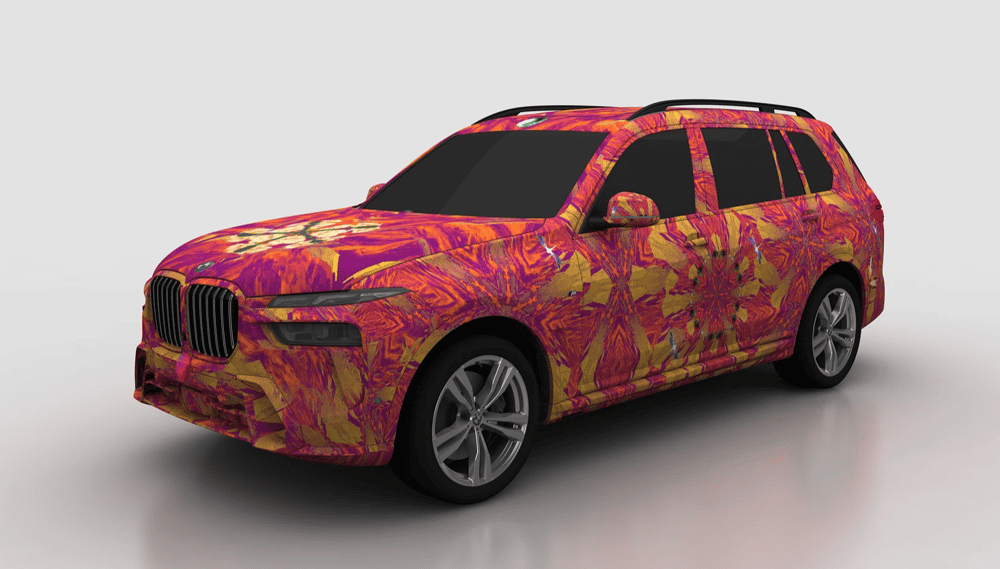

'The Future is Born of Art' Commission by India Art fair X BMW India; 1st Runner Up
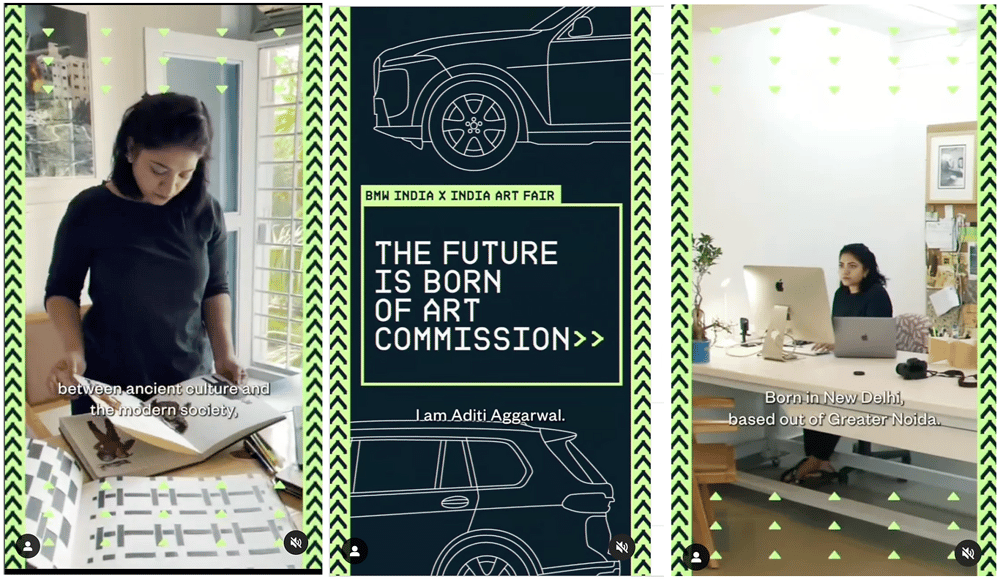

Davangi: How did the various aspects of your PhD contribute to the further development of your practice?
Click here to view Aditi's Online Viewing Room and learn more about her practice.
Aditi: My PhD journey was instrumental in enhancing and refining my artistic practice. Through research, I delved into the rich historical trajectory of self-portraiture, from its ancient origins to its evolution in Indian art, identifying key artists and movements that shaped its discourse. This deep dive into art history provided me with a nuanced understanding of the cultural and societal implications embedded within self-representation, greatly informing my artistic exploration. I learned to appreciate self-portraiture not merely as a form of personal expression but as a reflection of broader cultural narratives and individual identities within a complex social landscape. My research allowed me to contextualize my practice within larger artistic traditions, drawing inspiration from the diverse mediums and techniques employed by artists throughout history. By tracing the evolution of self-portraiture, I gained valuable insights into the aesthetic, conceptual, and technical dimensions of image-making, which enriched my creative process. My engagement with various theoretical frameworks, such as Joseph Krause's notion of art as a multifaceted entity, broadened my perspective on the nature of artistic expression. This philosophical inquiry encouraged me to explore the temporal and spatial dimensions of art, leading me to experiment with various mediums and formats to capture the complexities of urban experience. Reflecting on various readings, I endeavored to transcend conventional boundaries, employing a multidisciplinary approach that encompassed painting, drawing, collage, and other mediums. Drawing from my surroundings, memories, and personal experiences, I sought to create visually layered images that resonated with energy and depth. Additionally, my PhD journey instilled in me a commitment to archival practices, as I documented my surroundings, objects, and memories as sources of inspiration. This process of archiving not only facilitated introspection but also provided a framework for exploring the politics of connectivity and inclusion within my artistic narrative.

